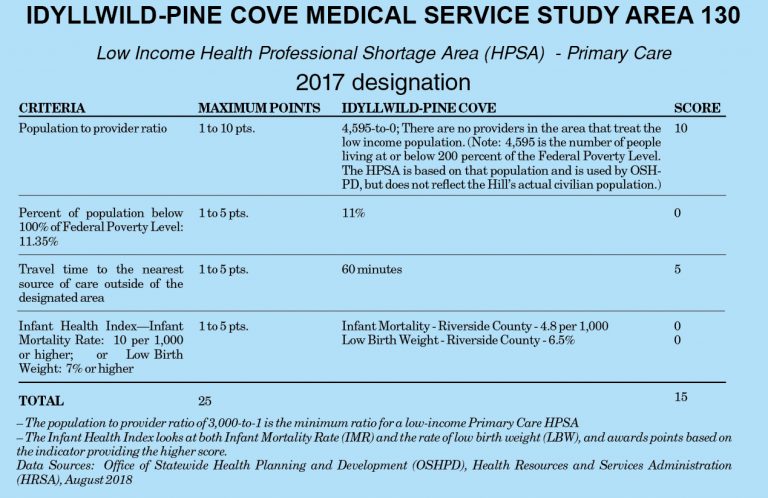Editor’s note: This story ran in the Aug. 26, 2021 Idyllwild Town Crier. Since it is such an important issue and many new residents have moved to town, I thought it would be important to the community to revisit the issue. As of Aug. 5, Idyllwild Water District has spent 55% on the two studies and was expecting them by the end of August.
Idyllwild Water District directors, staff and company representatives spent most of Wednesday [Aug. 18, 2021] night’s meeting discussing a more than $5.7 million proposed project to upgrade IWD’s Wastewater Treatment Plant.
The board is considering the project because “the WWTP has been in operation for 50 years and now exceeds its designed life,” according to General Manager Leo Havener in a memo to the board. It was built in 1966 but did not go into operation until 1971, he wrote.
This plant is for the sewage system that only some IWD customers (about 587 households compared to about 1,670 current IWD households) use. All others use septic systems. IWD is the only water district in Idyllwild/Pine Cove offering sewer.
“Along with the WWTP exceeding its designed life span, the WWTP has no redundancy, has, on a few occasions, exceeded permit requirements, and has a lack of SCADA [Supervisory Control and Data Acquisition] controls,” wrote Havener, as the three primary WWTP facility needs. SCADA systems both control and monitor physical processes.
One concern repeatedly raised during discussions was storm surge — such as Feb. 14, 2019, when flash floods destroyed highways and roads on the Hill. WWTP Chief Plant Operator Fritz Wuttke said IWD’s WWTP permit may not exceed 75% of flow and it came close in February and March 2019 when an average of 168,000 gallons a day flowed into the 250,000-gallon WWTP tank. That equates to about 67%.
According to the California Rural Water Association’s subsidiary, Specialized Utility Services Program Inc. estimate, “The WWTP project planning phase is expected to last approximately 51 weeks and be completed in June 2022.”
The Sacramento company’s estimate breaks down as:
Mobilization/Demobilization $340,000 (management)
Planning, Design and Land $390,900 (electrical, structural, design plans and specs)
Sites and Facilities Project Work $857,500 (contractor work)
Secondary Treatment $1,506,200 (custom supplier package, or equal)
Electrical, Instrumentation and Controls $1,307,600
Construction Management and Inspection $302,600
Also, a Pre-Design Contingency at 30% is tacked on of $3,331,000 for a total estimated project cost of $5,766,000.
IWD directors heard from CRWA Field Engineer Nathan Thomas and Lead Project Facilitator Nicole Cook, both of whom also fielded a barrage of questions from directors — primarily concerning the project’s cost.
CRWA hopes to offset the cost with a Santa Ana Watershed Project Authority grant with a maximum award of $1 million. It also may gain funding through a combination of USDA Rural Utilities grant/long funds with the SAWPA matching funds; state-revolving funds; and private funding. This may also include loans.
But CRWA won’t know if funding will occur until it conducts two studies: Task Order 1 at $18,660 to determine IWD’s funding eligibility from various government sources for WWTP design and construction; and Task Order 2 of $260,970 for project management; a preliminary engineering report; a site survey; a geotechnical study; California Environmental Quality Act documents; and an electrical and SCADA preliminary design.
“The impact of $6 million is concerning,” IWD Vice President Peter Szabadi said when discussions that lasted more than an hour began.
Cook discussed many funding options — all of which must go through multiple stages and are not guaranteed — and advised that some of the funds take from 18 months to three years for approval, and at least one requires matching funds.
The suggestion of starting work before funding is fully secured resulted in Thomas commenting, “You want to get funding in place before beginning construction.”
Thomas pointed out as more directors emphasized their cost concerns that “everything costs double” as time is extending — that he’s projecting out the length of time of planning and construction, therefore, including $1.3 million “for everything I didn’t know.”
Later, he explained in more detail, “The $1.3 million is a contingency amount equal to 25 percent of the current project construction cost estimate. This is a typical and moderate amount of contingency value for a project at this stage of preliminary design and is specifically added to prevent the project cost from rising later when more information is available.
“Costs are very dependent on project considerations going forward and may still change based on changes in the project scope or unique issues that are currently unforeseen. “
If a loan is required, Cook said it could be for a 30- to 50-year term.
“So, we have to spend to determine if we can get funding or not,” said Director Steve Kunkle. The two Task Orders subtotaled $279,630 plus a 30% grant application fee for a total of more than $300,000.
“Those tasks have to be done,” said IWD President Charles Schelly. “We have to replace our sewer system.”
Kunkle asked if it would be cheaper to renovate versus replacing. Thomas commented that in his experience, renovation costs twice as much as replacement.
Schelly quickly took a straw vote of those for renovation and for replacement. Kunkle was the only vote for renovation.
Schelly asked if a portable system could be established in case of an earthquake or other destruction to the system. Thomas said it is possible but temporary.
Schelly’s other concern was amortizing any IWD costs over 50 years, passing that on to the customers and still having a fund in 50 years to replace the WWTP again.
The board then unanimously approved Task Orders 1 and 2.
IWD considers $5.7 million project for Wastewater Treatment Plant replacement
By







